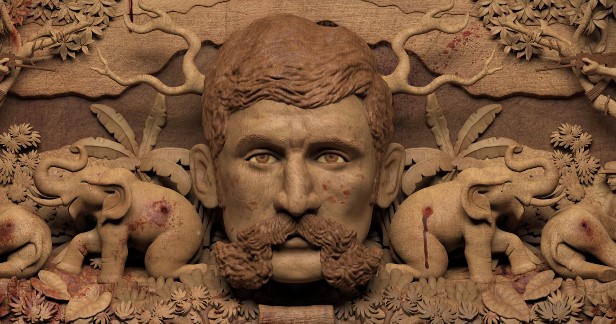“The Hunt for Veerappan” emerges as more than just a documentary; it’s a riveting odyssey into the depths of true-crime realism. In a world where narratives often tiptoe around the uncomfortable truths of criminality, this documentary dares to stare directly into the shadows, unmasking the enigma that was Veerappan. As the lights dim in the theater, audiences are primed to experience an unfiltered glimpse into a criminal’s life, a narrative that defies conventional notions of justice and delves headlong into the intricate layers of morality.
From the very outset, the documentary sets an evocative tone, whisking viewers away to the heart of the dense jungles that once served as Veerappan’s domain. The immersive visuals instantly establish the raw and untamed backdrop against which the story unfolds. Through a masterful interplay of recreated scenes, archived footage, and interviews, the documentary reconstructs the life and crimes of Veerappan. However, what truly sets this cinematic journey apart is its unwavering commitment to realism. There’s no glossing over the gruesome details; the narrative doesn’t flinch from depicting the violence and ruthlessness that marked Veerappan’s reign.
The Hunt for Veerappan Review: Empathy to Repulsion, from Awe to Condemnation
One of the most commendable aspects of “The Hunt for Veerappan” is its refusal to tread the familiar path of presenting a one-sided story. The documentary takes the time to explore the intricate nuances of Veerappan’s character, offering a multifaceted portrait of a man who existed in the gray areas of morality. As the audience is taken deeper into his psyche, a surprising range of emotions unfolds — from empathy to repulsion, from awe to condemnation. This deliberate ambiguity prompts uncomfortable yet necessary conversations about the very nature of villainy and the societal factors that contribute to the making of a criminal.
The real strength of the documentary lies in its ability to evoke emotions that linger long after the credits roll. Amid the heart-pounding action sequences and the contemplative moments, the narrative also dives into the legal and ethical complexities surrounding Veerappan’s pursuit. The viewer is challenged to consider questions that transcend the boundaries of law and order: What drives a man to commit heinous crimes? How does society’s complicity contribute to the rise of a criminal mastermind? What price is paid when justice is sought at any cost?
It’s worth noting that “The Hunt for Veerappan” doesn’t simply seek to entertain; it compels the audience to introspect. The carefully curated interviews with law enforcement officials, local residents, and even Veerappan’s own associates contribute to a mosaic of perspectives. This multiplicity of voices prevents the documentary from descending into a mere chronicle of events; instead, it becomes a thought-provoking meditation on the very nature of crime, justice, and the blurry lines that separate them.
In the final analysis, “The Hunt for Veerappan” is a remarkable piece of cinematic storytelling that transcends its genre. It’s an experience that challenges preconceptions, stirs emotions, and ignites discussions. As the lights come up and the theater empties, the audience is left not just with the memories of a gripping narrative, but with a lingering sense of unease and reflection.
This documentary isn’t just a retelling of a criminal’s story; it’s an exploration of the human condition itself, a tantalizing glimpse into the abyss that exists within us all.






